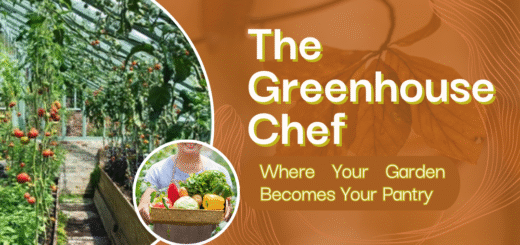What’s Next? Evolving Your Greenhouse Journey
Your greenhouse is thriving, a lush sanctuary you’ve built from the ground up. The routines are set, the harvests are reliable. It’s a wonderful place to be. But if you’re anything like me, that quiet voice in the back of your mind is already asking, “What else?” The true magic of greenhouse gardening lies in its endless potential for evolution. This isn’t about fixing what’s broken; it’s about playing, exploring, and seeing just how far your curiosity can take you.
Cultivating Curiosity: The Joy of the Unknown
It’s time to move beyond the seed catalog staples. Sure, tomatoes and lettuce are rewarding, but have you ever watched the intricate, otherworldly flower of a passionfruit vine unfurl? Or tasted a freshly picked fig, warm from the greenhouse sun, that’s so much richer than anything you can buy?
This year, challenge yourself with something truly new. Perhaps it’s a dwarf citrus tree, whose blossoms will perfume the entire space. Maybe it’s a patch of saffron crocus, yielding those precious crimson threads. The goal isn’t just to produce food, but to create experiences. There’s a unique thrill in nurturing a plant you know nothing about, in becoming a student again. You’ll learn its specific language—how much humidity it craves, when it tells you it’s thirsty—and that process will make you a more attentive gardener to all your plants.
Building a Deeper Kind of Sustainability
We often talk about sustainability in terms of systems—composting, water harvesting, renewable energy. These are crucial. But there’s a deeper layer: building a system that is truly self-sustaining and resilient.
Think beyond the rain barrel. Could you design a closed-loop watering system that uses aquaponics, where fish waste fertilizes your plants and the plants filter the water? It’s a fascinating puzzle that merges gardening with ecosystem design.
This mindset also applies to pest management. Instead of reaching for a spray, what if you dedicated a corner to plants that attract beneficial insects? A patch of dill and fennel can lure in ladybugs and lacewings, who will happily patrol your aphid population for you. It’s about working with nature’s logic, not against it, to create a greenhouse that requires less intervention and is more in balance.
The Living Soil: Your Underground Universe
We focus on what grows above the soil, but the real action is happening underneath our feet. The future of your greenhouse depends on the health of this unseen world. This is where you can make your most significant impact.
Vermicomposting is a fantastic start, but consider taking it further. Start a simple experiment: create a small batch of your own biochar from pruned branches and integrate it into a bed to supercharge soil microbiology and carbon retention. Learn to make fermented plant juices (FPJ) from the weeds you pull, turning them into a powerful natural fertilizer. Tending to your soil isn’t just a chore; it’s the most profound investment you can make in your garden’s future yield and health.
Conclusion: The Gardener Grows, Too
The future of your greenhouse isn’t just measured in new species or high-tech systems. The most important growth happens within you. Each experiment, whether a triumphant success or a glorious failure, layers your knowledge and deepens your connection to this craft.
Your greenhouse is a living laboratory, a place of endless possibility. Let it be a reflection of your evolving interests. Follow what captivates you, whether it’s the silent language of soil science, the challenge of a rare fruit, or the quiet satisfaction of a perfectly balanced ecosystem. Don’t just grow plants; grow your understanding. The next chapter of your greenhouse story is yours to write, one seed, one idea, at a time.


